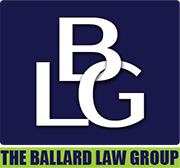When the market takes a turn for the worse, it can bring down the value of your house. And if you already have a second mortgage, a decrease in your home’s value could have you paying more than it’s worth. If a second mortgage is placing an unmanageable financial burden on you, a lien stripping may be able to help.
What Is Lien Stripping?
Lien stripping is a tool used in Chapter 13 bankruptcy that allows people whose mortgage exceeds the value of their house to get rid of a second or third mortgage. What this process does is take your second mortgage (which is a secured debt) and convert it into an unsecured debt (the same debt you would have on a credit card). In doing so, the court will order the lender to remove its junior liens from your property.
How Lien Stripping Works
As we mentioned above, lien stripping is only allowed when a person’s senior liens on the property exceed the home’s market value. This means that if your house is worth more than the combined balance on your first and second mortgage, then you would not qualify for a lien stripping under Chapter 13 bankruptcy. However, if you had a third mortgage that brought the total balance above the home’s value then you could strip the third to bring what you owe on the house to an amount that is below its market value.
Let’s use an example to illustrate this point.
Your house is worth $100,000 and you have a $125,000 first mortgage and a $50,000 second mortgage. In this case, because your first mortgage is greater than the value of the house, you can strip your second mortgage. Similarly, if you had a third mortgage of $25,000, you could strip that one as well.
Now let’s say that your house is worth $150,000. In this case, you would have equity above your first mortgage, and thusly would not be able to strip your second mortgage. But since the combined balance of the two mortgages ($175,000) is greater than the home’s value ($150,000), you could still strip the $25,000 third mortgage.
When Does the Lien Go Away?
Once the lien is stripped, it is treated as a nonpriority unsecured debt when you file for Chapter 13 bankruptcy. As an unsecured debt, you don’t have to make payments on your lien outside of your bankruptcy. Instead, you pay a small portion of the debt through your Chapter 13 plan. Once you complete the plan, anything left on your mortgage is discharged.
What this all comes down to is you will get the benefit of not having to pay your second mortgage as soon as you file for Chapter 13 bankruptcy. However, your second mortgage will not be removed until your bankruptcy plan is either completed or discharged. Also, if your bankruptcy case is dismissed before you complete your plan, your lien will not be stripped and you will remain liable for the debt.
If you would like to learn more about how a lien stripping could help you relieve some of your debt, call your Atlanta Bankruptcy Attorneys at The Ballard Law Group at (404) 800-9939 or send us a message on our contact page.
To learn more about tools under Chapter 13 bankruptcy, see our post on cram down mortgages.

